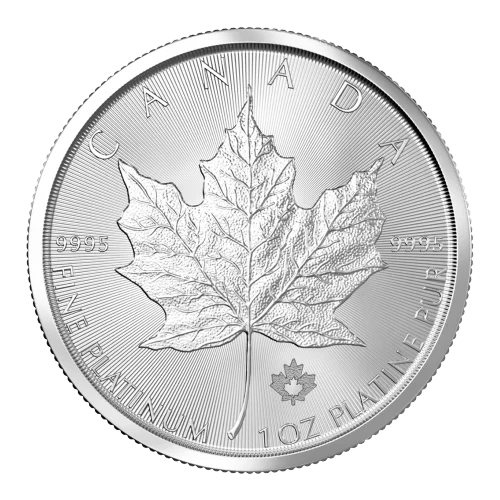GOLD
SILVER
Platinum
Palladium
Platinum
Platinum’s allure as an investment stems from its rarity, high demand across industries like automotive and jewelry, and potential to diversify portfolios due to its distinct price movements. Its historical value akin to gold and silver adds confidence, yet caution is needed due to market volatility, influenced by global economics and shifts in industry trends. Considering factors like personal financial goals, risk tolerance, and market conditions is crucial for informed platinum investments, warranting research and advice from financial experts.
Platinum
Platinum’s allure as an investment stems from its rarity, high demand across industries like automotive and jewelry, and potential to diversify portfolios due to its distinct price movements. Its historical value akin to gold and silver adds confidence, yet caution is needed due to market volatility, influenced by global economics and shifts in industry trends. Considering factors like personal financial goals, risk tolerance, and market conditions is crucial for informed platinum investments, warranting research and advice from financial experts.



1/10 oz Platinum American Eagle

1/10 oz Platinum American Eagle

1/4 oz. Platinum American Eagle

1/4 oz. Platinum American Eagle

1/2 oz. Platinum American Eagle

1/2 oz. Platinum American Eagle

American Eagle 1 - oz

American Eagle 1 - oz

PAMP Suisse Platinum Bar 1 - oz

PAMP Suisse Platinum Bar 1 - oz

50 x 1 Gram - Platinum Valcambi Combibar

50 x 1 Gram - Platinum Valcambi Combibar

Canadian Maple Leaf 1 - oz

Canadian Maple Leaf 1 - oz
Schedule a Time For Your Free Precious Metals Consultation at American Precious Metals Group.
We want to help you in person, however, here are a few of our most frequently asked questions.
Frequently Asked Question
While we are readily available to address any inquiries you may have, we have compiled a list of frequently asked questions that commonly arise:
The price of gold can be influenced by factors such as economic indicators, geopolitical events, currency fluctuations, and market sentiment. It is advisable to conduct thorough research, consider one's financial goals and risk tolerance, and consult with a financial professional before making any investment decisions.
Store of Value: Gold has a longstanding reputation as a reliable store of value. Its intrinsic worth and limited supply contribute to its ability to maintain purchasing power over time.
Inflation Hedge: Gold has demonstrated its ability to preserve value and even appreciate during periods of inflation. As the general price level rises, the value of gold may also increase, making it an effective hedge against inflationary pressures.
Portfolio Diversification: Including gold in an investment portfolio can enhance diversification. Gold's price movements have exhibited low or negative correlation with other asset classes, such as stocks and bonds. This characteristic helps mitigate risk and potentially reduce overall portfolio volatility.
Safe-Haven Asset: In times of economic uncertainty, geopolitical tensions, or market turbulence, gold has often served as a safe-haven asset. Investors turn to gold as a reliable store of value and a perceived safe investment during periods of instability.
By leveraging its store of value, inflation-hedging properties, diversification benefits, and safe-haven status, gold can play a valuable role in a well-rounded investment strategy.
Overcharge or misrepresent prices, taking advantage of customers' lack of knowledge.
Push high-commission products that may not align with the customer's goals or financial situation.
Make false claims or guarantees about potential returns, downplaying risks.
Fail to disclose risks associated with precious metals investments.
Use pressure sales tactics to force immediate purchases without allowing time for research or consideration.
Gold has demonstrated noteworthy performance over the past two decades, encompassing periods of growth and consolidation. Here's a general overview of its performance during this time:
During the early 2000s, gold experienced a significant bull market that persisted for several years. The price of gold steadily increased, propelled by factors such as economic uncertainties, geopolitical tensions, and heightened investment demand. This period witnessed substantial growth in gold prices.
Following the peak reached in 2011, gold entered a consolidation phase extending until 2015. Prices gradually declined as economic conditions improved, and investors shifted their focus to riskier assets. This period marked a correction in gold prices.
From approximately 2016 to 2020, gold entered another bull market phase. Various factors, including global economic uncertainties, low-interest rates, trade tensions, and central bank policies, reignited interest in gold. Prices steadily rose during this period, reaching new all-time highs in 2020.
In the year 2020 and the subsequent year, gold initially benefited from the COVID-19 pandemic's impact on the global economy, maintaining its upward trajectory. However, as economic conditions improved and COVID-19 vaccines were introduced, gold prices experienced some volatility and moderate consolidation.
It is essential to recognize that these trends are based on historical data and general market observations. Gold's performance is subject to influence from diverse factors, including global economic conditions, inflation, interest rates, currency fluctuations, and investor sentiment. When considering gold or any investment, it is advisable for individual investors to conduct thorough research and seek professional advice.
Gold's performance compared to the stock market has been mixed over the past 50 years. There were times when gold performed better than stocks, like in the 1970s and early 1980s when inflation and uncertainty drove up gold prices. However, overall, the stock market has shown stronger long-term performance due to economic growth and technological advancements. Gold and stocks often move in opposite directions during uncertain times, with gold performing well as a safe-haven asset. Gold also tends to be less volatile than stocks, which can be appealing to risk-averse investors. It's important to remember that past performance doesn't guarantee future results, so careful consideration and professional advice are crucial before making investment decisions.
